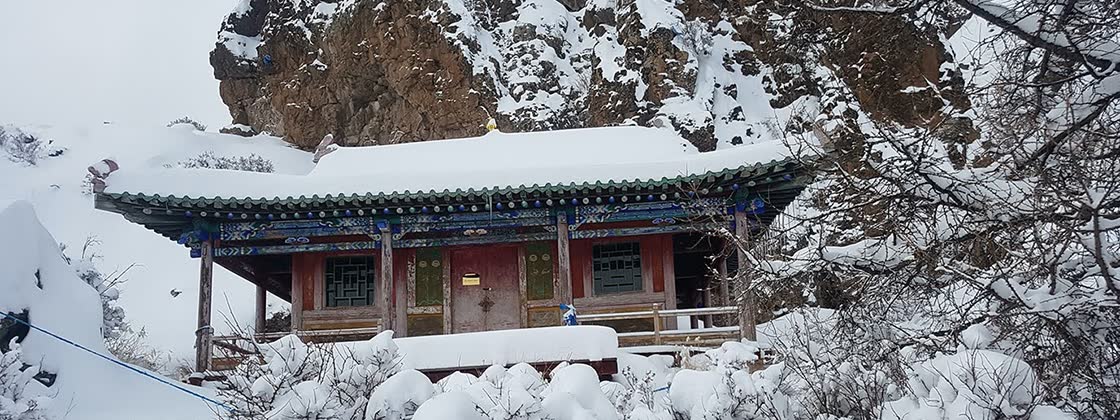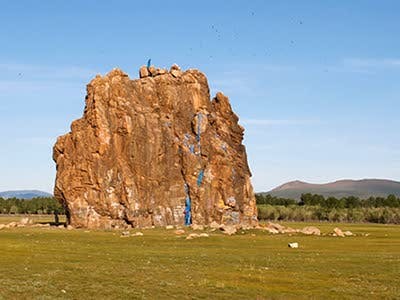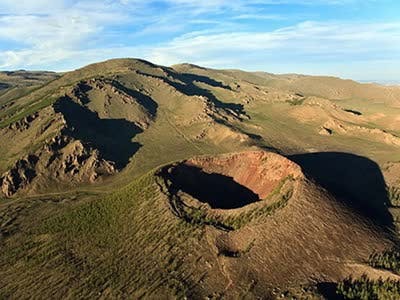Tuvkhun Temple
ABOUT TUVKHUN TEMPLE OR TUVKHUN KHIID
Tuvkhun Temple, also known as Tövkhön Monastery, is a significant Buddhist monastery located in the Khangai Mountains of central Mongolia. Situated about 60 kilometers northeast of Kharkhorin, it holds historical and religious importance and offers stunning views of the surrounding landscapes. Here are some key features and highlights of Tuvkhun Temple:

- Location and Setting: Tuvkhun Temple is perched on the rocky slopes of the Khangai Mountains, providing a picturesque and serene environment. It is situated at an altitude of approximately 2,600 meters (8,530 feet) above sea level, offering breathtaking panoramic views of the surrounding valleys, forests, and mountain ranges.
- Founder and Significance: Tuvkhun Temple was established in 1653 by Zanabazar, the first Jebtsundamba Khutuktu (spiritual leader) of Mongolia. Zanabazar was a renowned religious and artistic figure who played a significant role in shaping Mongolian Buddhism and culture. Tuvkhun Temple served as his meditation retreat and became an important center for Buddhist practice and learning.
- Architectural Style: Tuvkhun Temple is known for its unique architectural style. The temple complex is built on the rugged terrain, blending harmoniously with the natural surroundings. The main temple structures are made of stone and wood and feature intricate carvings and paintings. The complex includes prayer halls, meditation rooms, living quarters, and a library.
- Meditation Retreat: Tuvkhun Temple is renowned as a meditation retreat and spiritual sanctuary. Zanabazar spent many years in seclusion and meditation at this temple, seeking enlightenment and deeper understanding of Buddhist teachings. The temple's peaceful and remote location offers a serene atmosphere conducive to contemplation and spiritual practice.
- Cultural and Historical Significance: Tuvkhun Temple is an important cultural and historical site in Mongolia. It played a vital role in the preservation and revival of Buddhism during a time of political and cultural challenges. The temple complex holds numerous artifacts, religious manuscripts, and artistic works that reflect the rich cultural heritage of Mongolia.
- Hiking and Nature Exploration: Tuvkhun Temple is accessible via a hiking trail that winds through the beautiful landscapes of the Khangai Mountains. The trail offers opportunities for nature enthusiasts and hikers to explore the pristine forests, encounter wildlife, and enjoy the tranquility of the surroundings. The hike to the temple is a rewarding experience, both physically and spiritually.
- Pilgrimage Site: Tuvkhun Temple is a revered pilgrimage site for Buddhists and attracts devotees from Mongolia and beyond. Visitors can witness religious rituals and ceremonies performed by resident monks and experience the peaceful and spiritual ambiance of the temple.
Tuvkhun Temple is a place of historical, cultural, and spiritual significance. It offers a unique opportunity to explore Mongolian Buddhism, enjoy the natural beauty of the Khangai Mountains, and immerse oneself in a tranquil and contemplative atmosphere.
RELATED DESTINATIONS
Taikhar Chuluu, also known as Taikhar Rock, is a notable landmark located in central Mongolia. It is a large granite rock formation that stands alone in the vast steppe landscape.
Khorgo Volcano Mountain, also known as Khorgo Terkhiin Tsagaan Nuur National Park, is a prominent extinct volcano located in the Khangai Mountains of central Mongolia.
Elsen Tasarkhai, also known as Khogno Khan or the Mongol Els, is a sand dune and semi-desert area located in the central part of Mongolia, between the Khangai and Gobi Altai mountain ranges.


